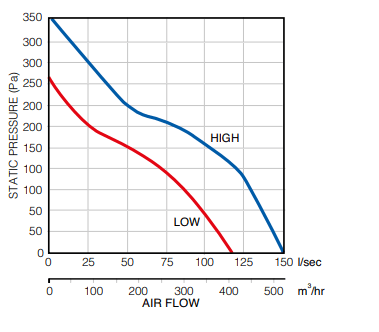acrmnsm
Materials
- May 14, 2013
- 106
I wonder where is the best place to locate an inline fan in a kitchen extractor design?
Its 5m run of 150mm dia round duct.
Layout is like this:
From kitchen hood 400mm straight through wall.
90 degree bend to vertical 2.5m length vertical
90 degree bend to horizontal 2m run to outlet.
My gut feeling is that it would be best to put the inline fan about halfway along the run - to maximise suck and blow? However this is not my area of expertise. Or does it matter?
Its 5m run of 150mm dia round duct.
Layout is like this:
From kitchen hood 400mm straight through wall.
90 degree bend to vertical 2.5m length vertical
90 degree bend to horizontal 2m run to outlet.
My gut feeling is that it would be best to put the inline fan about halfway along the run - to maximise suck and blow? However this is not my area of expertise. Or does it matter?

